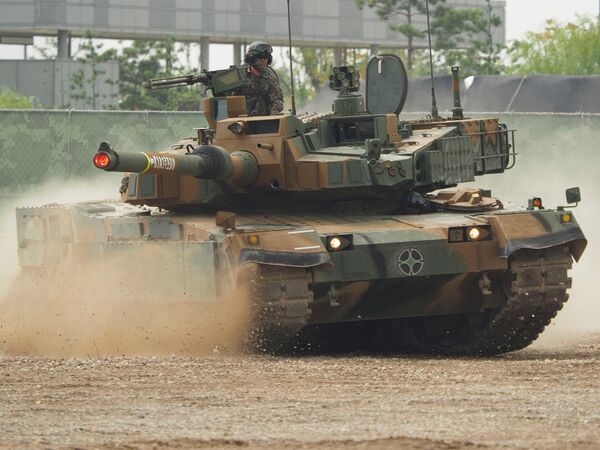
In service with the Republic of Korea Army, Hyundai Rotem's K2 main battle tank, pictured above, is replacing ageing inventories of M48 Patton tanks and older models of the K1 MBT. (Janes/Kelvin Wong)
South Korea's Defense Acquisition Program Administration (DAPA) has approved the mass production of a fourth batch of the Hyundai Rotem K2 main battle tank (MBT) for the Republic of Korea Army (RoKA).
DAPA said on 25 May that the project to build the batch-four MBTs has been allocated KRW1.94 trillion (USD1.46 billion) between 2024 and 2028. It said the additional K2s will contribute to the “improvement of the mobile corps' ability to perform offensive manoeuvres”.
DAPA did not disclose how many K2s would be built in the new batch.
According to Janes Land Warfare Platforms: Armoured Fighting Vehicles, the K2 is a third-generation MBT designed to provide the RoKA with modern heavy-armour capability.
The MBT is operated by a crew of three and has a length of 10.8 m and a width of 3.6 m. It weighs 56 tonnes and has a maximum onroad speed of 70 km/h.
The K2's armament comprises a 120 mm L/55 smoothbore gun, a co-axial 7.62 mm machine gun, 12 turret-mounted smoke grenade launchers, and a roof-mounted 12.7 mm machine gun.
The tanks are replacing the RoKA's ageing inventories of M48 Patton tanks and earlier models of the K1 MBT, which were produced by Hyundai Rotem up until the mid-1990s.
In the initial three production batches, the RoKA is thought to have ordered about 260 K2 tanks, with most of these delivered. Janes has earlier reported that the RoKA requirement could eventually reach about 600 units.
Looking to read the full article?
Gain unlimited access to Janes news and more...
